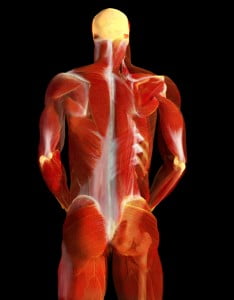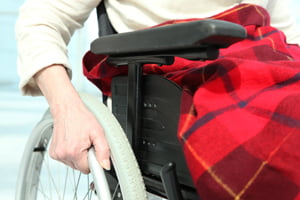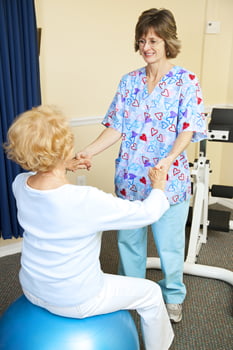James was a 67-year-old, married entrepreneur with bilateral thigh and calf pain that prevented him from walking for more than one block on a flat surface or sitting for more than 30 minutes. He couldn’t leave his house for a walk and was unable to sit in a restaurant. His pain was 7/10. I evaluated him after he had undergone 2 lumbar spine fusions, epidural steroid and trigger point injections, all without pain relief. His history revealed that after a fall he developed lower back and leg pain. An MRI found spinal stenosis and degenerative spondylolisthesis. He had a spinal fusion, which provided 2 months of relief before all of his symptoms returned. He tried trigger point injections and epidural steroids, and then a second spinal fusion – all of which provided no lasting relief.
When James came to see me, he was offered an indwelling morphine pump or a spinal cord stimulator.
His primary complaint was a constant burning and pulling sensation in his thighs, and a pain that shot down the back of his leg to his heels. On examination, I discovered James was deconditioned: he had decreased range of motion in his back and hips due to stiffness, and showed weakness in his abdominals and back extensor muscles. James’ physical examination also revealed 4 muscles that were likely contributing to his pain: the right and left gluteus maximus, the tensor fasciae latae, and the vastus lateralis. He received muscle-tendon injections to each muscle, and following each procedure, 3 days of a structured physical therapy protocol.
Soon after receiving all injections and learning all 21 exercises, he was walking easily on the street, eating in restaurants, and was able to travel to Vietnam and China with his wife.
His imaging findings of stenosis and spondylolisthesis existed before his fall and did not produce symptoms. He only had back and leg pain after his fall. It would have made sense to consider that soft tissue injury was a reasonable possible source of his pain prior to embarking on costly, interventions with considerable downside risks. I am suggesting that a step care model would have been a better option for James and for all of our patients with back pain (simple and cheap before complicated and expensive).

 Nearly all individuals experience degenerative changes in the spine as they age, with nearly 20% of the population exhibiting disc herniations without any symptoms or pain by the age of 50(1). This means that even though your X-ray or MRI shows an abnormality, it doesn’t mean that this is what is causing your pain. Though imaging studies can be valuable tools, they are not equipped to show the nuances of the muscles and soft tissue.
Nearly all individuals experience degenerative changes in the spine as they age, with nearly 20% of the population exhibiting disc herniations without any symptoms or pain by the age of 50(1). This means that even though your X-ray or MRI shows an abnormality, it doesn’t mean that this is what is causing your pain. Though imaging studies can be valuable tools, they are not equipped to show the nuances of the muscles and soft tissue.

 I have a friend who has been complaining of weakness in his legs. He has a history of high cholesterol and has been on statins.
I have a friend who has been complaining of weakness in his legs. He has a history of high cholesterol and has been on statins.

 Studies have shown that obese patients have more problems with musculoskeletal pain than the general population (
Studies have shown that obese patients have more problems with musculoskeletal pain than the general population (
